Texas transforms into a flying mammal paradise every summer, hosting one of nature’s most spectacular migrations that brings millions of bats north from Mexico. Picture enormous rivers of bats streaming across twilight skies, each one playing a crucial role in keeping our ecosystem balanced while putting on a show that draws visitors from around the world.
The Lone Star State holds the crown as the battiest place in America, and honestly, there’s good reason for that title. When summer arrives, these nocturnal creatures turn Texas bridges and caves into their personal nurseries, creating viewing opportunities that you simply can’t find anywhere else.
The Great Summer Migration North
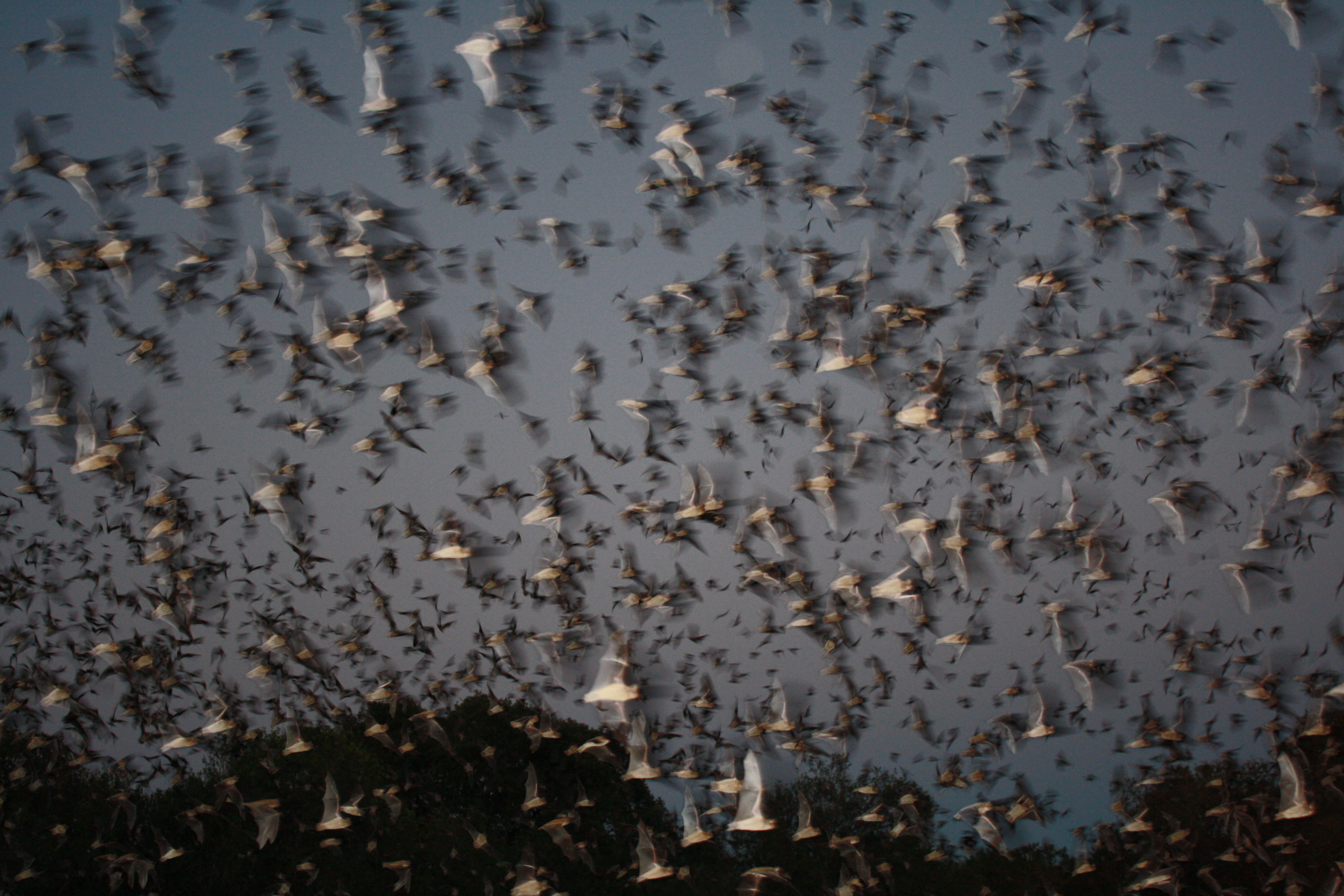
Every February, millions of Mexican free-tailed bats migrate to Texas in March and April, forming summer colonies to birth and rear pups. Think of it as the world’s largest maternity ward migration, with female bats forming large maternity colonies where they will raise their young.
Mexican free-tailed bats are migratory and spend the winters in caves in Mexico. They begin their migration to Texas in February and by early spring female bats begin to form large maternity colonies. These aren’t random pit stops either. There are only a small number of suitable sites for these large maternity colonies which require high humidity and temperature levels.
The timing isn’t coincidental. The Bracken Cave is the destination every March or April of over 15 million Mexican free-tailed bats. These bats fly as much as 1,000 miles from Mexico to this cave.
Why Texas Becomes Baby Bat Central
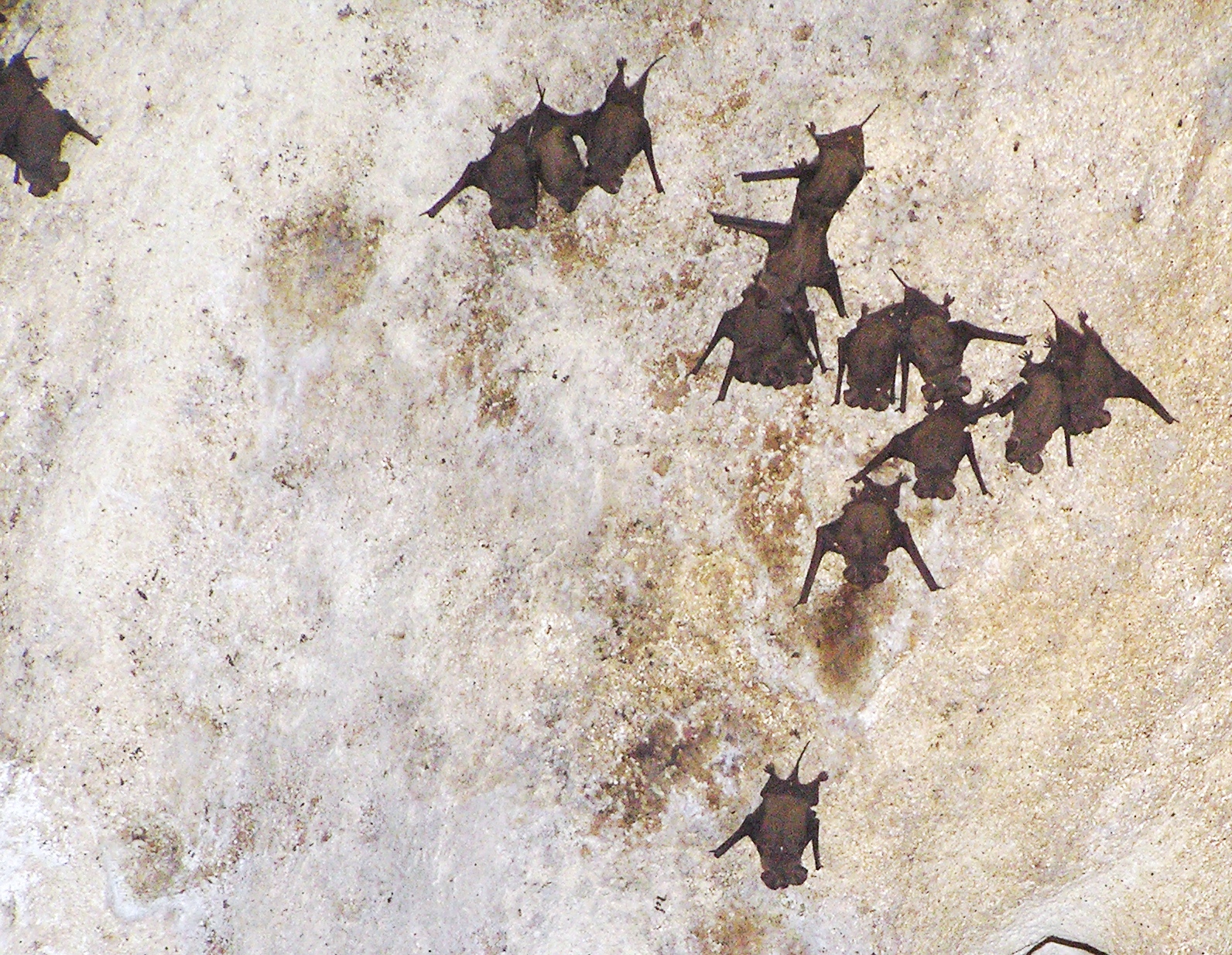
The Mexican free-tailed bat colonies in Central Texas are “maternity colonies,” where pregnant female bats congregate after wintering in Mexico, to give birth to the next generation. These aren’t ordinary nurseries though. An astounding 500 pups have been recorded clinging to 1-square-foot of the cave walls – an ingenious way for keeping warm; the temperature is around 102 °F.
In June, mother bats give birth to one pup each, and here’s where things get really interesting. They do it by consuming milk with a 28% fat content. Mexican free-tailed bats have the highest fat content in their milk of any bat. That’s richer than heavy cream.
The Mexican free-tailed bats’ milk is so rich that the babies grow fast and are ready to fly within five to six weeks of birth. Meanwhile, male bats do not help in raising the young and form smaller bachelor colonies away from females.
Peak Summer Population Explosions
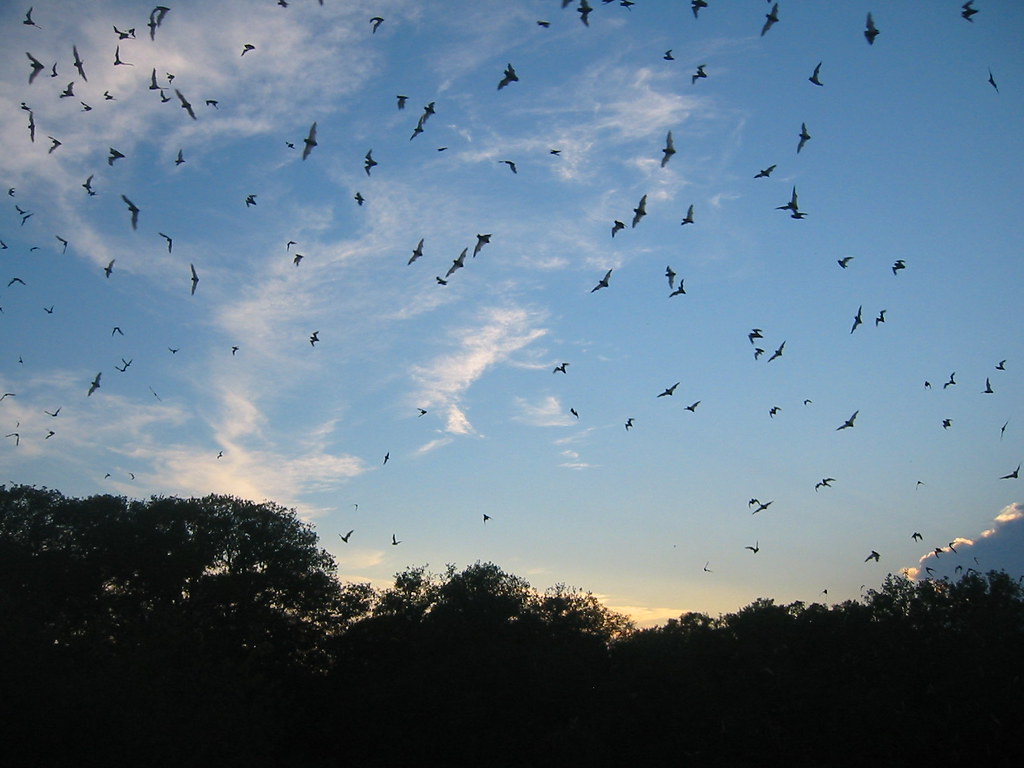
By early August, most pups are flying and foraging on their own. It is at this time of the summer when the most spectacular bat emergences often occur as the colony size might easily double. This timing creates what researchers call peak bat season.
By August, the babies that were born in the spring need to be mature enough to join the nightly bug hunt. That’s why populations emerging from the colonies are biggest in August and September. For migrating species like the Mexican free-tailed bats, late summer and early fall is peak season for viewing. By late August, bats born earlier in the year are big enough to fly.
Texas Record Breaking Bat Colonies
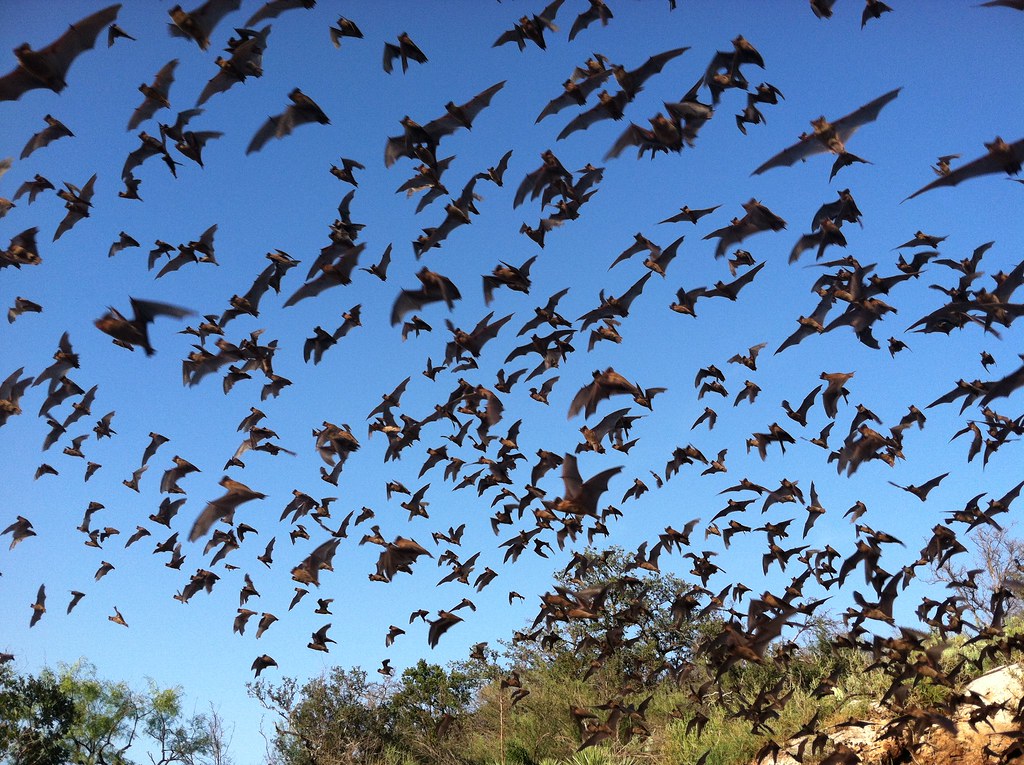
Texas boasts the largest known bat colony in the world, Bracken Cave Preserve, near San Antonio, and the largest urban bat colony, Congress Avenue Bridge, in Austin. Bracken Cave Preserve is home to over 15 million bats. It’s recognized by Guinness World Records as the largest bat colony in the world.
The Ann W. Richards Congress Avenue Bridge, located in the heart of downtown Austin, hosts the largest urban bat colony in the world, estimated at 1.5 million bats. It is the largest urban colony in North America, with an estimated 1,500,000 bats. Each night they eat 10,000 to 30,000 lb of insects.
Ecological Powerhouses of Pest Control
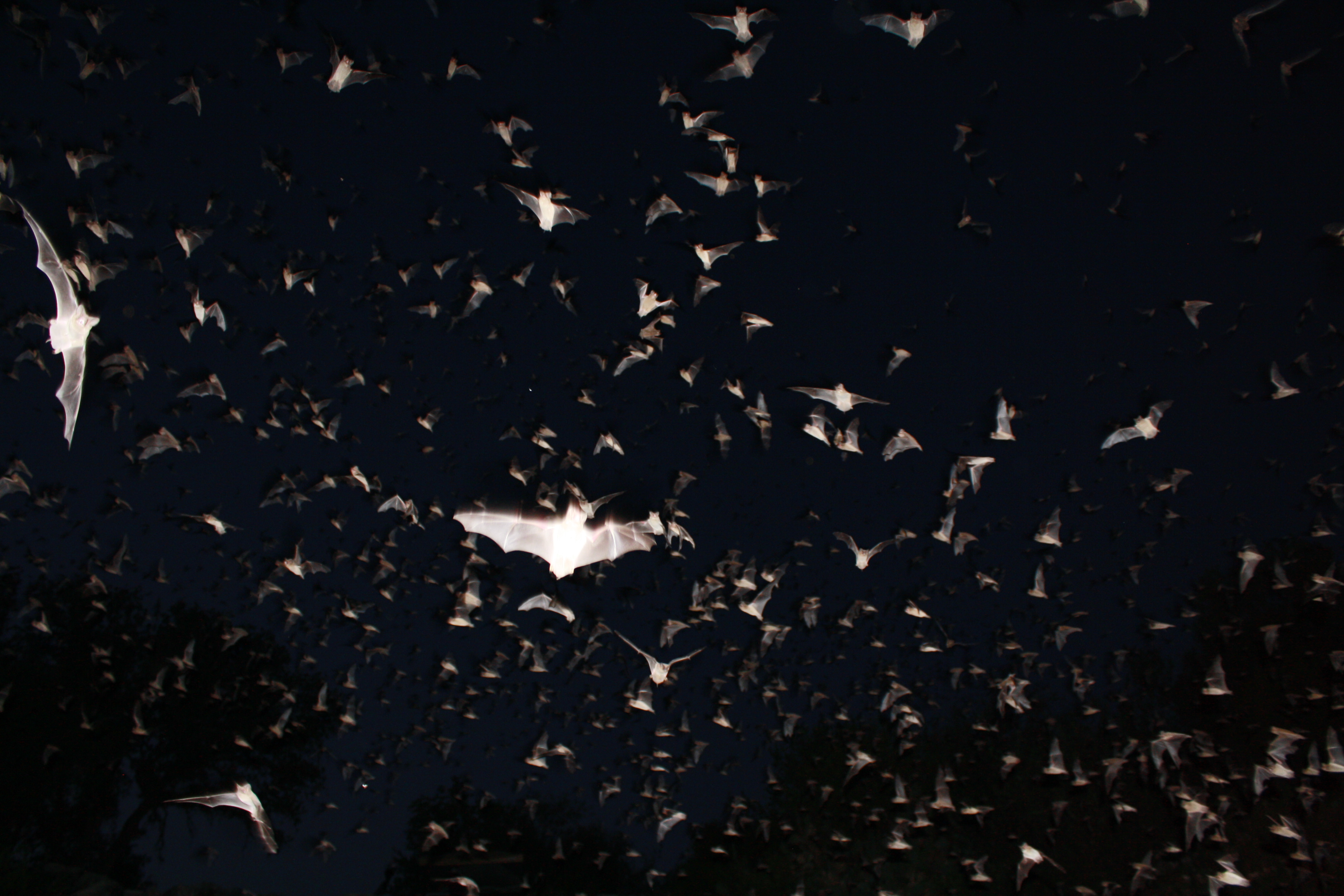
Mexican free-tailed bats are very important for keeping crop pests in check as they can eat up to two-thirds of their body weight in insects each night, especially while lactating and feeding young. The economic impact is staggering. Bats provide an important ecosystem service through pest consumption, which is valued at $22.9 billion annually in the United States.
With the large numbers of agricultural pests they eat, research has demonstrated that these bats can save farmers up to two applications of pesticides per year. We estimate the bats’ value as pest control for cotton production in an eight-county region in south-central Texas. Our calculations show an annual value of $741 000 per year.
The Bracken Cave bat colony eats about 400,000 pounds of bugs a night. The colony eats about 400,000 pounds of bugs a night. That’s the equivalent weight of about two hundred cars worth of insects consumed nightly.
Congress Avenue Bridge: Austin’s Urban Marvel

Large numbers of bats began roosting in the Congress Avenue Bridge in the early 1980s, shortly after it was renovated. Few people understood how valuable the bats were, and many feared them. It took a lot of effort by Bat Conservation International and other bat-friendly folks to help turn the tide of public opinion.
Today, Austin loves its bats, and this international tourist attraction brings 140,000 people and as much as $10 million to Austin every year. Visitors and residents alike line up nightly on the Congress Avenue Bridge to witness the bats fly out from beneath the bridge, forming a surreal dark cloud as they ascend into the night sky. Arrive early for a front-row spot and be sure to face east, as the bats will fly out in that direction.
Great viewing opportunities are most likely during spring migration from mid-March to mid-April and as bat pups are learning to fly in late July, continuing through August. Emergences will occur every night during spring and summer, normally within 30 minutes before sundown.
Waugh Drive Bridge: Houston’s Hidden Gem
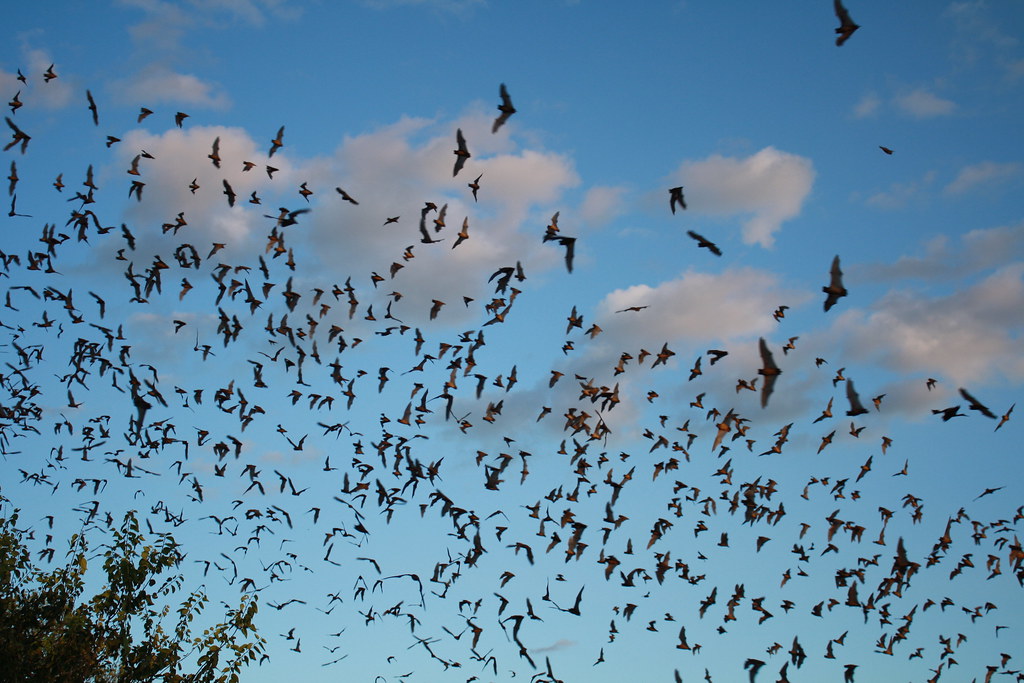
Nestled among lush green vegetation of Buffalo Bayou Park, Waugh Drive Bridge rests over Buffalo Bayou, less than two miles west of Downtown Houston. The bat flights are amazing, winding along the bayou or through the skyscrapers across downtown. An estimated 250,000 Mexican free-tailed bats call the bridge home.
Buffalo Bayou Partnership offers boat trips on the bayou, culminating in watching the bat flight from below. Viewing is free from the platform, sidewalk or bridge. The best emergences happen on warm nights any month of the year. However, the bats usually remain inside the bridge crevices and do not emerge when sunset temperatures are near 50 degrees or below, or when it is raining.
Camden Street Bridge: San Antonio’s Seasonal Colony
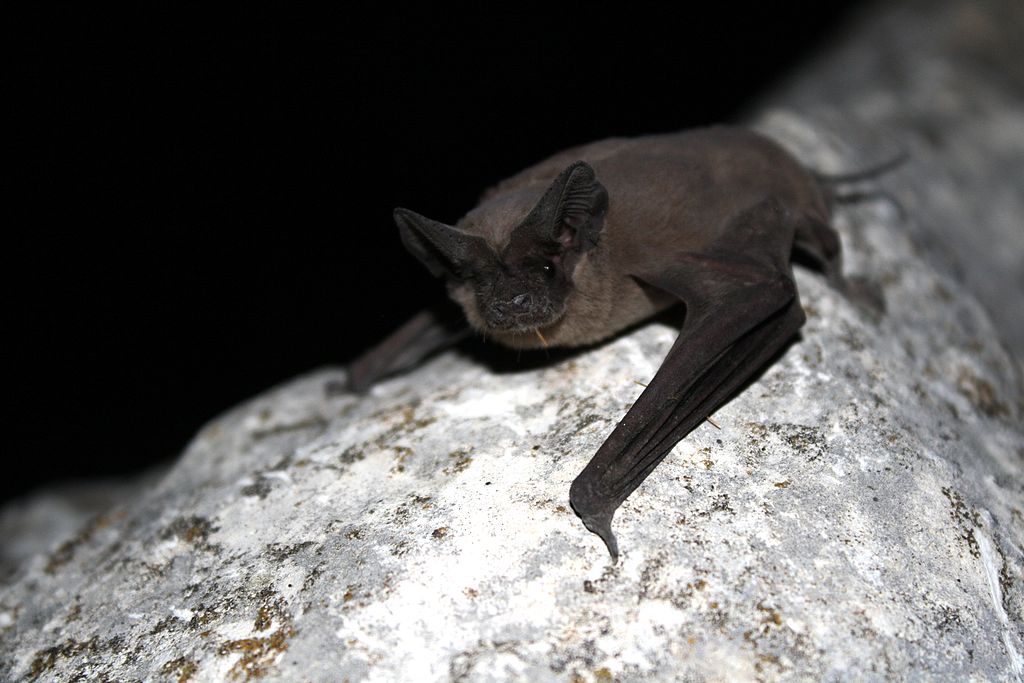
Nestled under the I-35 Bridge where it crosses the San Antonio River near Camden Street, a colony of approximately 50,000 male Mexican free-tailed bats roost during the summer months. Located along the Museum Reach segment of the San Antonio River Walk, the expansion joint under the concrete bridge is the perfect home for these nocturnal mammals.
The colony’s close proximity to the water of the San Antonio River gives the bats an open area to glide through when they emerge for their nightly feedings of agricultural pests. Best viewing location is on river level at the intersection of Camden Street and Newell Avenue.
McNeil Overpass: Round Rock’s Rising Star
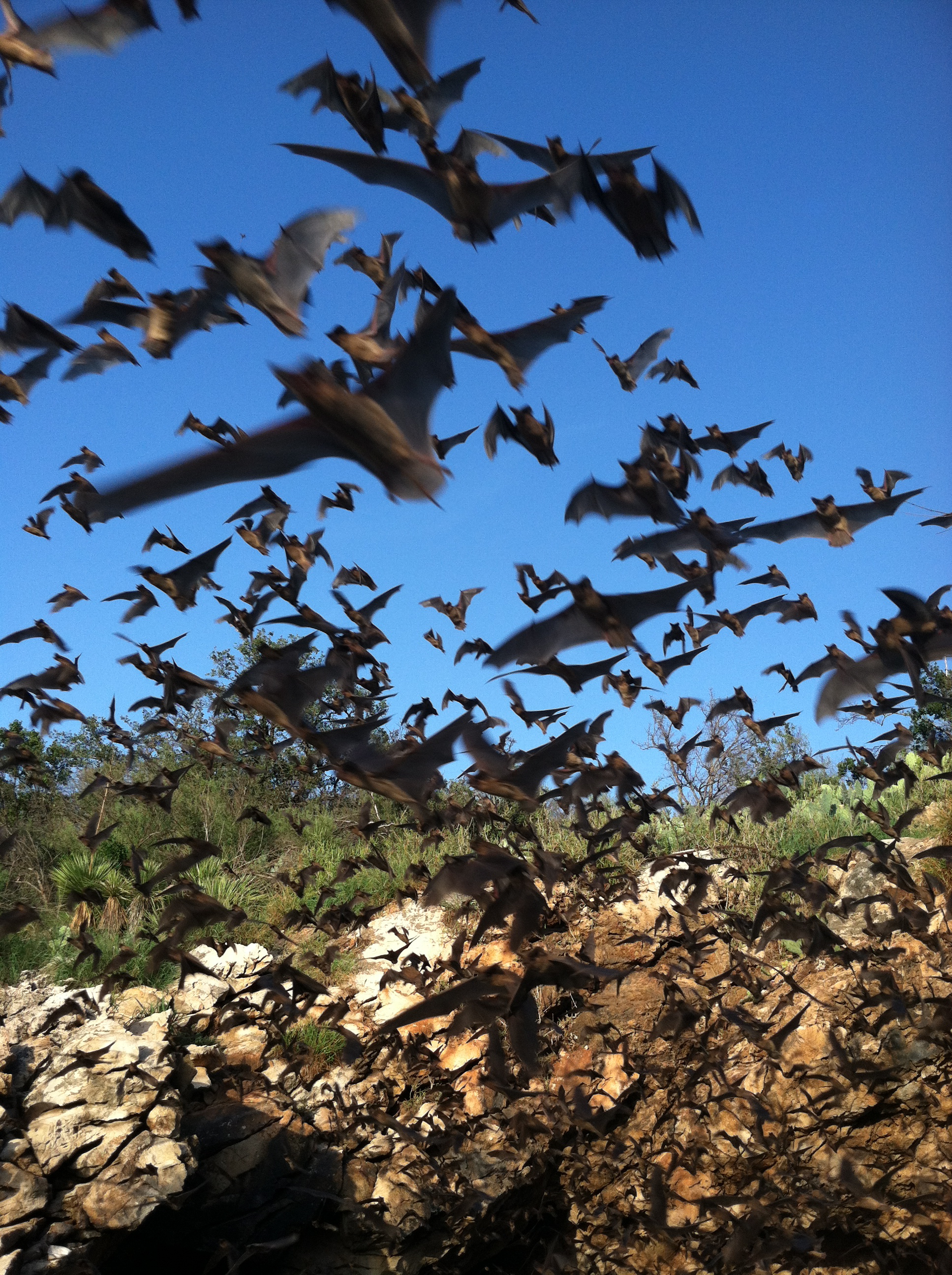
Come join us near dusk (between 7:15 pm and 7:30 pm) underneath the Interstate 35 overpass at McNeil Road in Round Rock (located in front of Napa Auto Store), for a batty night of fun with the Round Rock Bats. Each spring and summer night, they take to the night air in flight, traveling 60-plus miles per hour at 2-mile high flight patterns. They begin their 6-8 hour feeding frenzy devouring millions of Round Rock insects in a single night.
Available free parking is located in the Napa Auto Store parking lot and is first-come, first-serve. Don’t forget to bring blankets, covers, and a hat or some other head covering. This location represents the growing recognition of bat watching opportunities beyond the famous Austin and Houston bridges.
Spectacular Flight Patterns and Speeds
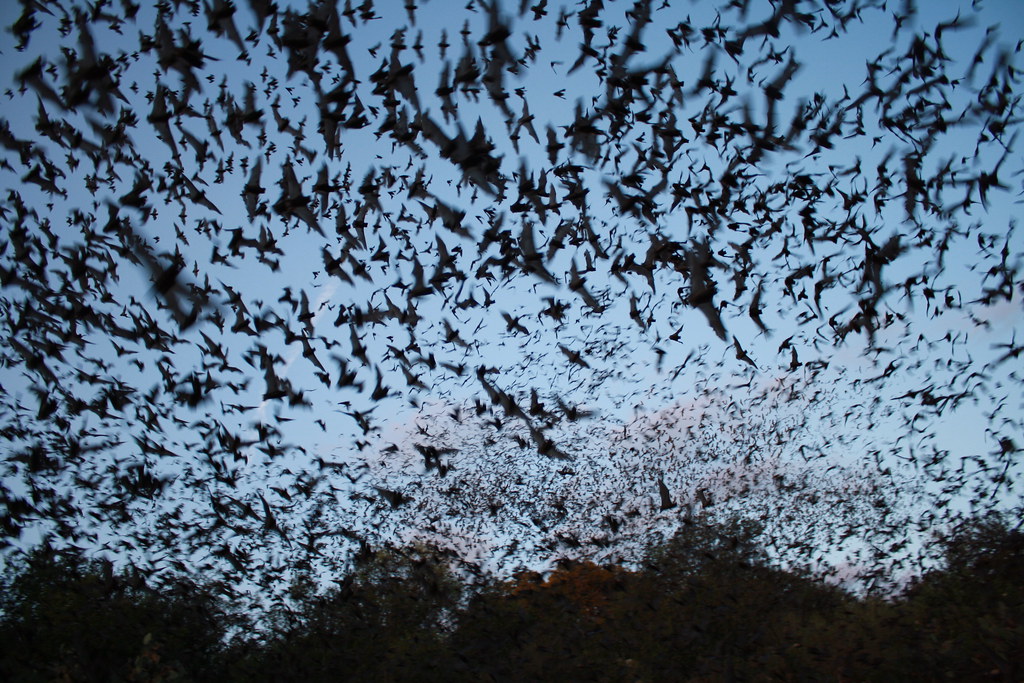
Mexican free-tailed bats can fly up to 100 miles round trip in an evening looking for food. They are built for speed with short fur and long narrow wings and can fly up to 60 miles per hour with a tail wind. It has been claimed to have the fastest horizontal speed of any animal, with reported top ground speeds over 99 mph, though this claim remains disputed among researchers.
They have been observed feeding up to 10,000 feet while searching for food. Large numbers of Mexican free-tailed bats fly hundreds of meters above the ground in Texas to feed on migrating insects. The creatures emerge nightly from the cave in a tornado of leathery wings that spins upwards and unwinds into a massive ribbon of bats streaming to the horizon in search of insects.
Best Viewing Tips and Timing
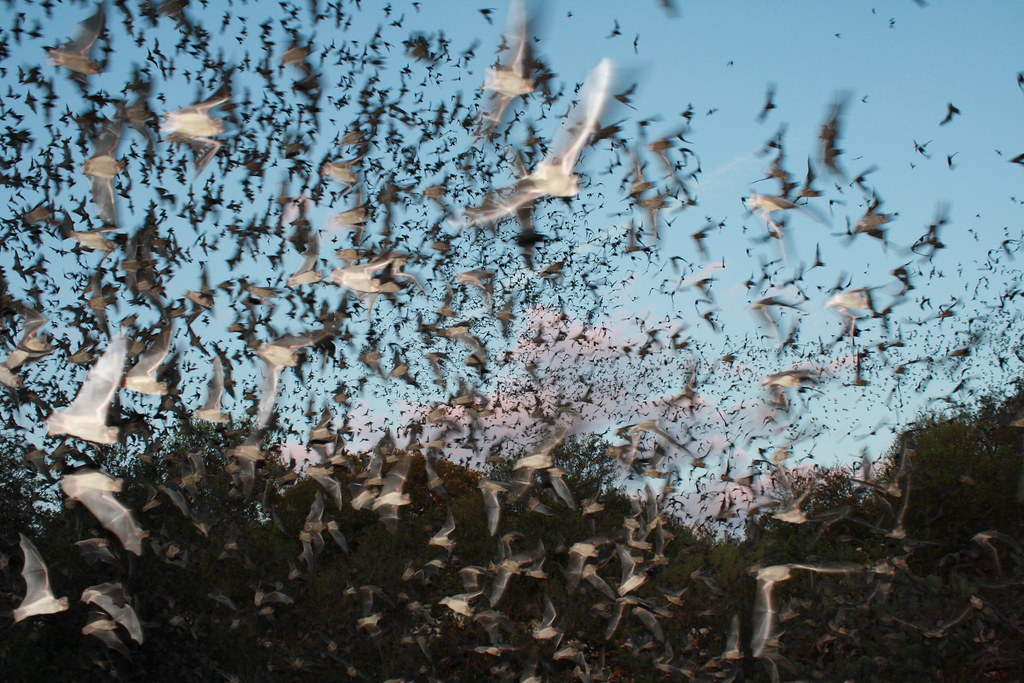
The best predictor of spectacular, early emergences is hot, dry weather. The most spectacular emergences ever seen at the bridge are in years of the most severe droughts. At such times the hungry bats can be forced to emerge up to an hour before sunset due to scarcity of insects to eat.
Realize that a bat emergence is not a predictable event. No one can be sure when bats will come out or if they will even come out at all. Bad weather, cold temperatures, and other factors can cause bats to vary their emergence times. It is important to keep your voices low while viewing a bat flight. Loud noises can disturb the bats and cause them to alter their emergence behavior.
Keep your distance from the bats while they are emerging. Most viewing sites have designated seating areas where you can view the bats comfortably out of the direct flight path of the bats. If viewing bats emerging from a bridge, avoid standing directly beneath the bridge and move to the side instead.
Looking back at this incredible natural phenomenon, you realize that Texas bats represent one of nature’s most successful partnerships between wildlife and human communities. These bridges have become accidental sanctuaries that support millions of bats while providing unforgettable experiences for countless visitors. From the record-breaking colonies at Bracken Cave to the urban spectacle of Congress Avenue Bridge, Texas continues to prove that conservation and tourism can work hand in wing.
What draws you more to this amazing spectacle – the sheer numbers involved or the crucial ecological role these creatures play? Tell us in the comments.

Jan loves Wildlife and Animals and is one of the founders of Animals Around The Globe. He holds an MSc in Finance & Economics and is a passionate PADI Open Water Diver. His favorite animals are Mountain Gorillas, Tigers, and Great White Sharks. He lived in South Africa, Germany, the USA, Ireland, Italy, China, and Australia. Before AATG, Jan worked for Google, Axel Springer, BMW and others.



